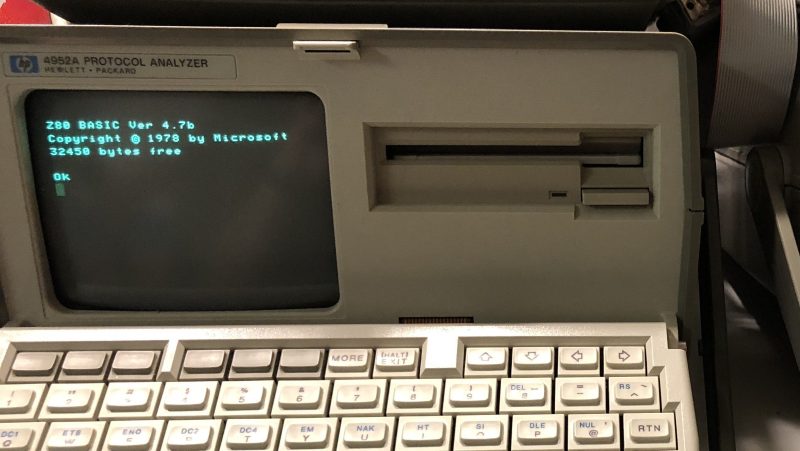What do you do when you find an ancient piece of test gear and want to have fun? Well, you can always try getting BASIC running on it, and that’s precisely what [David Kuder] did.
The HP4952A Protocol Analyzer actually looks a lot like an old computer, even if it was never meant for general-purpose use. The heart of the machine is a Zilog Z80 CPU, though, so it shares a lot in common with microcomputers of its era.
Among other hacks, [David] worked to get Microsoft Basic-80 running on the machine. Initially, he was only able to get it up and running on the display, with no way to read the keyboard, disk, or access the serial port. Eventually, by diving into the nitty-gritty of the machine, he was able to at least get the keyboard working along with some basic BASIC programs. Usable memory is just 8KB, but you can do a fair bit with that when you’ve only got a 32×16 display for output anyway!
It’s a neat hack and one that was extendable to the HP4957A as well. We’ve seen similar machines on these pages before, too! If you’ve got your own neat retro hacks on the boil, don’t hesitate to drop us a line!
[Thanks to Christopher Zell for the tip!]

















Forth would probably work better than basic on this memory constrained platform.
Or Tiny Fortran, maybe. But that’s a compiler, normally.
Systems running it had ~48 to 64KB of RAM, if I’m not mistaken.
These 8 KB are little even by late 70s standard. An expanded ViC20 had more than that (default was 5KB and pretty much unusable).
Seriously, to do something meaningful with it, add some extra RAM.
If no sockets are available, it might be possible to piggy-back some extra RAM.
Making the serial port work would be nice for terminal communication.
Anyway, these are just obvious ideas, nothing very creative of me.
As a pure tech demo, running Basic with the default memory expansion is fine.
The 8KB is actually just the binary loaded from disk, with overlays you can pull in more code / data. There is 32KB available scratch memory for basic programs. I didn’t ever explore enough to figure out the disk I/O or serial stuff. These little buggers have more than just a Z80, as they also have dedicated subsystems for the floppy & RAM disks, and serial I/O. the Z80 is the “main” cpu in that it runs the UI applications that tell everything else what to do. The floppy drive has it’s own 80C88 servicing it, and there’s an 8051 and 68008 on the RAM board. The 68008 appears to run protocol decoders, and the 8051 handles the remote control from a PC. [Trevor] also was working on figuring out some of the dark magic at work: https://hackaday.io/project/163027
My 68000-based E1 / T1 / whatnot protocol tester (Idacom PT520 by HP) was natively running FORTH, on 4 of its 5 CPUs (sic! — plus additional two 68EC030s not exposed to the console, probably doing some real-time stuff closer to I/O). Unfortunately HDD failed, old unobtanium Seagate ST1100 MFM disk…
The good news is that you can find MFM drive emulators these days, so although the original Seagate drive may be unobtainium your device will never know it isn’t taking to one.
Z80, 8Kb, BASIC
And how did its price compare to a Sinclair of the same era?
B^)
Oh!
Sorry!
I didn’t see the copyright on the HP’s monitor for 1990.
A few years after Sinclair’s heyday.
Because hack a day doesn’t like Z80, I think it is more powerful and versatile than the 6502
¿?
And Vim is better than Emacs. And Rust is better than C.
Vanilla is better than chocolate.